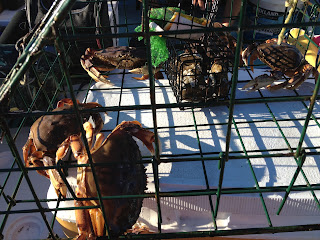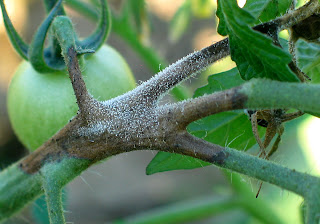10/31/12
October ends on a bittersweet note with the hatching of my first
incubated chick. It’s been a rough couple of months with chicken-mama-drama. If
you read earlier posts, you know my troubles. But since it's been a while since I last posted, allow me to recap. This summer, raccoons killed off my flock. After the attack, I was left with only Lucy,
a hyper black Astrolop that no one was particularly fond of. Well, in times of
mourning, strangers become friends. I grew to adore Lucy, just as I adored her
lost coop mates. I adopted a rouge rooster named Gerry, an Americana banished
from his cul-de-sac because he can’t tell time and was disturbing neighbors
with late-night and early morning crowing. He’s a lovely guy, but he can be
annoying.
My hope was that Lucy and Gerry would produce a chicks and rebuild the flock. But Lucy
refused to sit on her eggs. I found a broody hen on Craigslist, a plump
Rock Hampton named Ronda, to serve as a surrogate mama. Ronda's previous owner swore the hen was broody,
wouldn’t lay eggs, horded eggs of others and defended the nest with
nasty pecks. I figured Ronda would work out perfectly.
I introduced Ronda to the coop. Unfortunately, she fell in love with handsome Gerry and forgot all about sitting on
eggs. She and Gerry became an item. To my surprise, she started laying eggs
after a year of reported dormancy. Gerry woke up the woman in her. Go figure.
I was thrilled to have two layers, but disappointed that
neither wanted to nest. One afternoon Lucy was on the nest. I hadn’t gathered
eggs in a while, so there was a pile up. I reached underneath her and she attacked
my arm. This was new. I let her keep the eggs, partly because she scared me and partly because I was curious. She stuck with the process, and after a
couple of weeks, I moved her and the eggs into my office. Crazy Lucy had gone
broody after all.
After three weeks, three little black chicks tucked beneath
her wings. I waited a few more days, hoping more would hatch, but no luck. Two
failed to make it from the shell alive and the other eggs may have been
infertile. But I was happy. Lucy and her chicks lived in my office for a couple
of weeks. It’s not as bad as it sounds. She kept her crate tidy, and I welcomed
the distraction.
My interest in incubation grew, as broody hens are few and far between. I made a homemade incubator from
an old 6-pack cooler I found in the garage. I used Ronda’s fertile eggs, since
Lucy was busy doing mom things, and Ronda was busy doing Gerry. Things seemed
to be working well with the hot water thermostat I installed to keep the incubator at 99.5 degrees. It was a pain to
turn the eggs three times per day, and it put a serious cramp
in my travel schedule. Eggs should be turned every 8 hours to prevent the developing
chick from sticking to the shell. I didn’t have to worry about it for long, because
on day 6 something went haywire with the thermostat, and I cooked the eggs. Ugh. Failure.
I ordered a mini incubator online, one with automatic turning.
Heaven. Of course Ronda stopped laying shortly after the thing arrived, giving
me only 3 eggs to hatch. I set the incubator up in my office and loaded the three
eggs. I hoped 2 out of the 3 would hatch. Combined with Lucy’s three babies, I
figured five new birds would be enough to replace my lost flock. And this is where the old adage, “Don’t count
your chickens before they hatch,” comes into play.
Meanwhile, Lucy and her chicks and a young Coo-coo Moran rooster made their
home in my commercial greenhouse. The chicks were fully feathered and carbon
copies of their mama. Life in the greenhouse was grand. Days were
spent scratching up the raised beds, hunting for slugs, bugs, worms and grubs. Composting
produce made a never ending feast. Nights were warm, and there was room to fly. Utopia. The
only care in the world, and it was a big one, came a few nights ago when
raccoons found a way into the greenhouse. The raccoons killed every last
bird. The 3 babies, Lucy, and the Coo-coo Maran are all gone. End of chicken utopia.
So, it’s a bittersweet Halloween morning as I welcome Frankie to the
world. I wonder how I’ll keep her safe. I can’t keep raising chicks to serve as
raccoon food. I understand the risks of raising animals. I understand that Mother Nature rules. I find it odd that the years of growing up on a farm failed to harden me. My heart breaks easy and often.
As I wait for the other eggs to hatch, I’m scanning the internet for live raccoon traps. My forgiving self argues with my mother-rage, "A raccoon must eat too." Mother-rage always wins. I heard raccoon tastes like chicken. Maybe I’ll find out.
As I wait for the other eggs to hatch, I’m scanning the internet for live raccoon traps. My forgiving self argues with my mother-rage, "A raccoon must eat too." Mother-rage always wins. I heard raccoon tastes like chicken. Maybe I’ll find out.
.jpg)






 blackberry-Salal jam
blackberry-Salal jam























